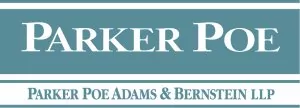Last week, the IRS released the long-awaited final 403(b) regulations, which include numerous changes and clarifications, just a few of which are highlighted below. Intended to close gaps between 403(b) plans sponsored by tax-exempt entities, public schools and universities and hospitals, and other similar types of plans such as 401(k) plans, the regulations are generally not effective until 2009. Sponsors may rely on the regulations immediately if they are applied consistently (i.e., sponsors may not pick and choose what aspects of the regulations are to be applied now and what aspects will be applied later).
Key aspects of the final regulations include:
- Written Document – Notwithstanding ERISA's written plan requirement, neither the Code nor IRS guidance previously required a written document. Starting in 2009, all 403(b) plans must have a written document containing pertinent terms and conditions, including those for eligibility, limitations and benefits.
- Plan Terminations – Neither the Code nor IRS guidance previously contemplated termination of 403(b) plans. The final regulations allow for termination and distribution of assets such that participants can make rollovers.
- Meaningful Notice of Eligibility for Deferrals – Generally, 403(b) plan sponsors must provide all employees with an " effective opportunity" to make salary deferral contributions to the plan (though they can limit those eligible for employer contributions). The final regulations set forth a description of "effective opportunity," including a once-per-year requirement. Not providing "universal availability" is often cited as the most prevalent error that occurs with 403(b) plans, and the IRS recently announced an expanded outreach campaign to public schools aimed at increasing compliance with this rule.
- Prompt Remittance of Deferral Contributions to All Plans – ERISA regulations require sponsors of 403(b) plans subject to ERISA (generally, those including employer contributions or notable employer involvement) to remit employee deferrals to the plan as soon as possible (e.g., within a reasonable number of days after each payroll date). The final regulations make a similar, though slightly more liberal, rule generally applicable to non- ERISA 403(b) plans.
- Hardship Distributions – The final regulations make clear that hardship distributions from 403(b) plans must follow the same rules applicable to 401(k) plans. Thus, for example, participants who take hardship withdrawals must be precluded from making salary deferral contributions for a minimum of six months.
- Entities Under Common Control – The final regulations clarify when tax-exempt organizations are under common control and considered a single employer for benefit purposes. Specifically, exempt organizations are under common control if "at least 80% of the directors or trustee of one organization are either representatives of, or directly or indirectly controlled by, the other organization."
Note that, immediately following the release of the regulations, the DOL issued a Field Assistance Bulletin acknowledging that employers with 403(b) arrangements funded solely by salary deferrals and meeting a DOL safe harbor for avoiding ERISA coverage can remain within the safe harbor while still complying with the requirements in the new 403(b) regulations, though care should be taken in plan drafting with respect to minimizing the extent of the employer's involvement with the plan.
This is only a brief overview of some key features of the regulations. Other more-detailed aspects include clarifications on application of "catch-up" contribution rules, modifications to and limitations on in-service distributions and plan-to-plan transfers and elimination of incidental life insurance. Look for more details on compliance with the final 403(b) regulations as the deadline for implementation draws nearer.
This Client Alert is intended to inform readers of recent developments in the field of employment and benefits law. It should not be considered as providing conclusive answers to specific legal problems.
